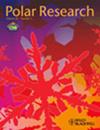搁浅白鲸幼崽的反应和护理:两例不同结果病例的报告
IF 1.3
4区 地球科学
Q3 ECOLOGY
引用次数: 1
摘要
考虑到白鲸通常居住的偏远崎岖地区,以及任何鲸目动物的康复成功率都很低,因此很少有机会营救被困的白鲸。阿拉斯加海洋生物中心照顾了两只搁浅的小白鲸,结果有两种不同。2012年,一头新生的雄性白鲸幼崽(DL1202)在布里斯托尔湾遭遇强烈风暴后搁浅。2017年,一名直升机飞行员在库克湾上空飞行时发现了一只搁浅的雄性小白鲸(DL1705)。阿拉斯加海洋生物中心运送这两只幼鲸进行康复,并根据其他搁浅鲸目动物的支持性护理计划,在动物设施中护理新生白鲸。诊断包括全血计数、血清化学、微生物培养、听力测试、成像和形态测量,以监测系统健康。包括在水池浮选支架中的处理;抗菌药物;胃肠道支持;密切监测呼吸、排尿、排便和行为。经过三周的支持性护理,布里斯托尔湾小牛(DL1202)死于败血症,原因可能是与早产相关的抗体缺乏被动转移。七周后,Cook Inlet小牛(DL1705)康复,并停止所有药物治疗。由于无法独自生存,他被宣布为不可释放,并被安置在动物设施的长期护理中,与其他白鲸一起生活。鲸目动物重症监护成功案例的各个方面和细节成为重要的参考资料,对小型濒危种群中的重要动物的生存尤其重要。本文章由计算机程序翻译,如有差异,请以英文原文为准。
Stranded beluga (Delphinapterus leucas) calf response and care: reports of two cases with different outcomes
Given the remote, rugged areas belugas typically inhabit and the low rehabilitation success rate with any cetacean, it is rare to have the opportunity to rescue a live-stranded beluga. The Alaska SeaLife Center cared for two stranded beluga calves with two different outcomes. In 2012, a neonatal male beluga calf (DL1202) stranded following intense storms in Bristol Bay. In 2017, a helicopter pilot discovered a stranded male beluga calf (DL1705) during a flight over Cook Inlet. The Alaska SeaLife Center transported both calves for rehabilitation and utilized supportive care plans based on those for other species of stranded cetaceans and care of neonatal belugas at zoological facilities. Diagnostics included complete blood counts, serum chemistries, microbial cultures, hearing tests, imaging and morphometric measurements to monitor systemic health. Treatments included in-pool flotation support; antimicrobials; gastrointestinal support; and close monitoring of respirations, urination, defecation and behaviour. After three weeks of supportive care, the Bristol Bay calf (DL1202) succumbed to sepsis secondary to a possible prematurity-related lack of passive transfer of antibodies. After seven weeks, the Cook Inlet calf (DL1705) recovered and all medications were discontinued. Unable to survive on his own, he was declared non-releasable and placed in long-term care at a zoological facility, to live with other belugas. Aspects and details from successful cases of cetacean critical care become important references especially vital for the survival of essential animals in small, endangered populations.
求助全文
通过发布文献求助,成功后即可免费获取论文全文。
去求助
来源期刊

Polar Research
地学-地球科学综合
CiteScore
3.20
自引率
5.30%
发文量
22
审稿时长
>12 weeks
期刊介绍:
Since 1982, Polar Research has been the international, peer-reviewed journal of the Norwegian Polar Institute, Norway''s central institution for research, environmental monitoring and mapping of the polar regions. Aiming to promote the exchange of scientific knowledge about the Arctic and Antarctic across disciplinary boundaries, Polar Research serves an international community of researchers and managers. As an open-access journal, Polar Research makes its contents freely available to the general public.
Original primary research papers comprise the mainstay of Polar Research. Review articles, brief research notes, letters to the editor and book reviews are also included. Special issues are published from time to time.
The scope of Polar Research encompasses research in all scientific disciplines relevant to the polar regions. These include, but are not limited to, the subfields of biology, ecology, geology, oceanography, glaciology and atmospheric science. Submissions from the social sciences and those focusing on polar management and policy issues are welcome. Contributions about Antarctica are particularly encouraged.
 求助内容:
求助内容: 应助结果提醒方式:
应助结果提醒方式:


